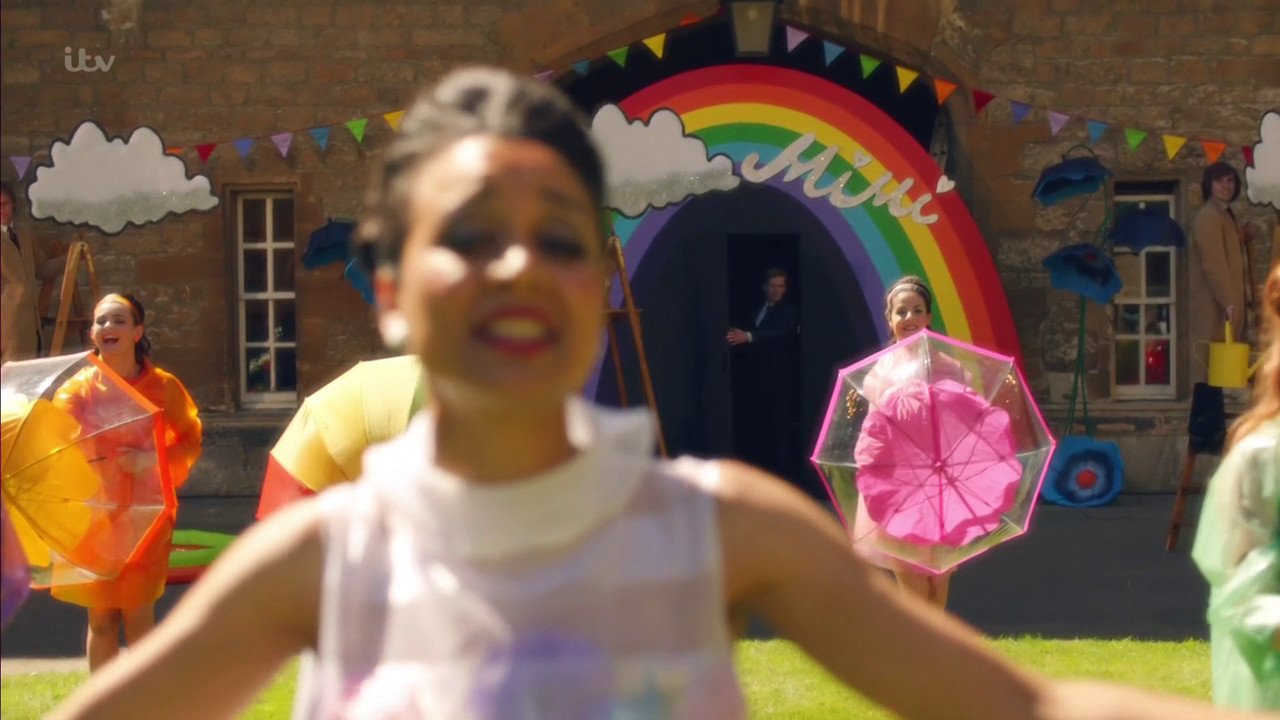“It claws its way down your stomach,” is how my friend describes digesting milk, after a pause, like she edited this line a few times. In France, she ate all the cheese she wanted and it was clawless. She speculates that the unpasteurized cheese there retains whatever it is that helps people to digest it. She retains nothing of her newfound alimentary tolerance, as if U.S. customs brought her to an antiseptic temperature.
Back in France, she instagrammed a sketch daily, alongside a photo of her subject. The sketch and the photo were in the order I prefer: a movie and dinner, not dinner and a movie. The sketches were full of movement, while the photos were, as photos are, lifeless. One sketch showed sunlight pouring onto floor tiles that appeared to radiate warmth. In reality, she bought slippers to walk on those tiles because they were so cold.
The night I saw The Last Jedi I had a dream as red as that movie. It concluded as The Empire Strikes Back began, but on a salt planet rather than an ice planet, so that instead of Empire’s arc of pasteurization (water, air, fire, earth), we get all the pinches of salt from a long time before a long time ago as a planet. It’s as if doubt has a gravity all its own, with a repulsion inverse to its ability to delaminate certainty. The planet’s composition is a kind of joke on Star Wars fans, who see a planet of roughly the same appearance as Hoth in Empire (white), and assume it’s cold. The white dust gives way to red underneath, which someone licks and is surprised to find salty. I have to assume that in a movie so concerned with cost in blood spilt that the red salt crystals, red windshields, red suits of armor, and red oval offices are as bombastic rhetorically as they are aesthetically.

Whenever I recommend something, I’m probably just saying that the disorientation has dividends. I want to say it’s more alchemical than that. A good movie shouldn’t just give you back the time spent watching it, but make the conservation of time illogical. The only things about The Last Jedi not in the realist mode are the color red, and cutting back and forth between shot and reverse shot of Rey and Kylo, who reside in different scenes. Montage is magic. Each episode of Endeavour begins with a dense, lyrical montage, which it then spends an hour and a half sucking the life out of. Detectives are basically vampires, and Morse particularly so. You pity how helpless he is to not be a killjoy. He has the foot-shooting tendency to take the moral high ground even when questioning people. His foot is perpetually in his mouth, it’s bleeding, and he’s sucking on it. Maybe murder mysteries have always been flat-footed prose chasing after poetry. The rabbit pulled from the hat of British mysteries is the mean material of the murder’s gothic symbolism. The genre’s interest is in the suggestive ellipses released by the many fissions of meaning and fact throughout, until finally the solution drops, heavy and depleted.
If you search for aesthetics without meaning, you end up finding fascism. America admitted that it never cared about content in a president and we can’t stop repeating him, the Freudian fidgit spinner. Politically, I ought to have a poetics of detection instead of murder. On the other hand, I know someone who is plodding through The Rise and Fall of The Third Reich in order to understand Hitler. Become seduced by form or stampeded by content.
In “New Rules”, Dua Lipa is a kind of upside-down, inside-out Moses, descending into the pit of her dreams to give herself commandments against God. Unlike reading a nonfiction tome to see the world from the perspective of a fascist, Lipa in no way finds an understanding of her undoing’s consciousness a necessary part of not being undone. (Not that it’s clear that the new rules aren’t another undoing.) The “understand Hitler” version of history, rather than being the only way to keep from repeating it, turns out to be a perfectly good way of repeating it both unconsciously and consciously. The monster becomes a distraction from itself.
“What’s the worst thing you can say as a Christian?” Anja asks Thelma in Thelma, and she answers “Jesus Satan,” a fairly good description of either herself or the two of them, as they ROFL. Anja mentions her own father only once: “He has a lot of children and I’m not really sure if he likes kids.” Thelma’s apparently loving father chastises her for thinking she’s better than other people, an affliction that is, to be fair, native to university, which she is attending. In return for attempting to repress her powers–amplified by repressing the memory of either telekinetically murdering her brother, or her parents psychically murdering her–she offers him a choice: burn or drown. No gradients allowed. The psychological thriller has the potential to be murder mystery in reverse, moving from prosaic to bizarre in a manner that suggests the former was always the latter. There is often a second conclusionary movement of retroactive scare quotes, the “it was all a dream” move. Double Lover turns this into its crowning disorientation, a twist that sticks. It’s revealed that most of the movie was somatopsychic, hallucinations brought on by the malformed fetus of her twin stuck inside her. The fetus is removed, and her psychologist husband doesn’t understand why she’s not over it. She and the audience experienced the revealing violence of her hallucinations. She remembers her husband’s twin, who supposedly doesn’t exist. Her twin, a lump of barely recognizable flesh (like what you get at the end of an Endeavour episode), isn’t alive, and therefore she’s doubly alive.